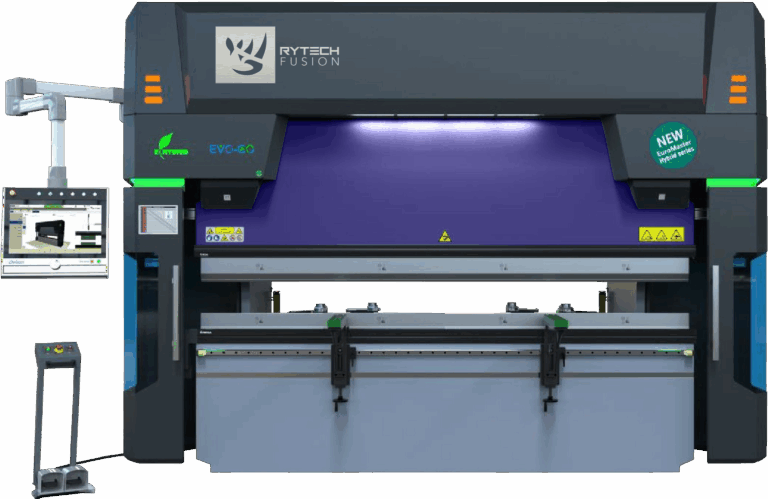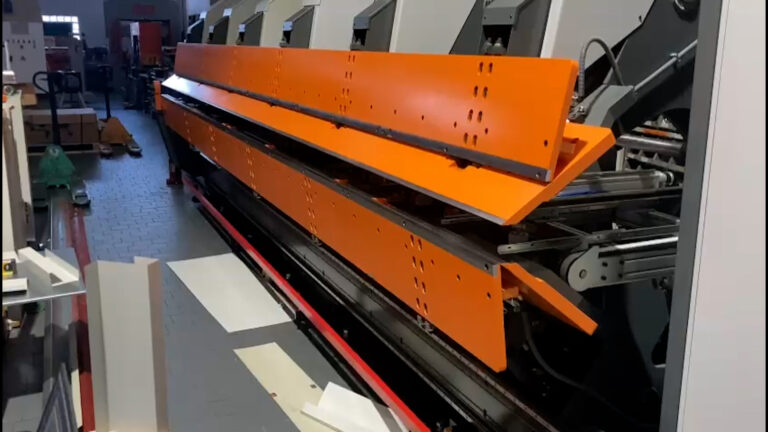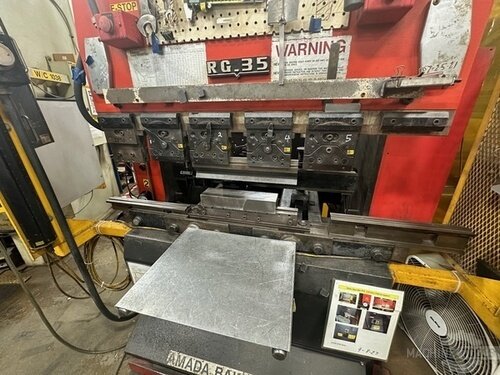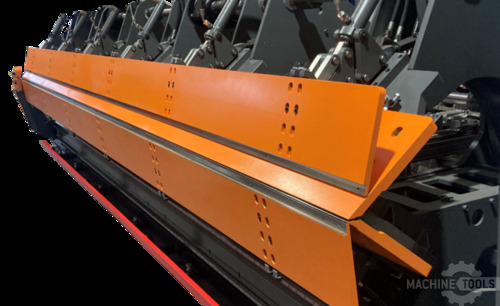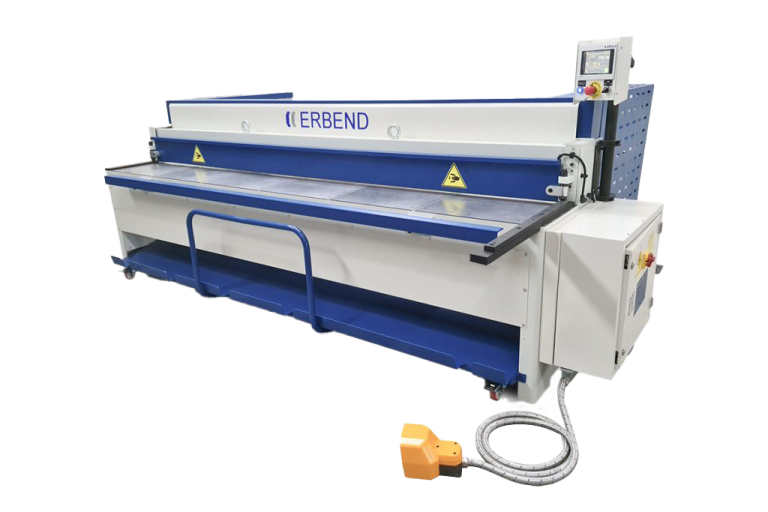From my earliest days working on the south side of Chicago, I’ve always believed the best solutions start with listening. Over the years, I’ve had the privilege of working side-by-side with fabricators, roofing specialists, and shop owners—helping them navigate the ever-changing world of metal forming technology. Now, as Regional Sales Executive at Mac-Tech, my mission is simple: help you get the most out of every coil, sheet, and shift. Whether it’s a high-speed coil line or a custom folder, I’m here to help you weigh your options and invest smartly.
Understanding the Limitations of Traditional Press Brakes in Modern Production
Press brakes have been the backbone of metal fabrication for decades, and for good reason. They’re versatile, robust, and can handle a wide range of jobs. But as customer demands evolve—shorter lead times, more complex profiles, and tighter tolerances—traditional press brakes can start to show their age.
Manual setups eat into valuable production hours. Skilled operators are increasingly hard to find. And when you’re feeding from coil or need high repeatability on long panels, the limitations become clear:
- Labor-intensive setups for each part
- Difficulty maintaining tight tolerances on long or thin workpieces
- Risk of marring or scratching pre-finished or sensitive materials
- Slow throughput for high-mix, low-volume batches
If your production is bottlenecked by these factors, it’s time to consider what’s next.
Unveiling CNC Folders: The Game-Changer for Efficient Coil-Fed Manufacturing
Enter the CNC folder—a modern alternative purpose-built for today’s demands. Unlike press brakes, CNC folders support the material from below, minimizing distortion and ensuring consistent, accurate bends. With servo-driven controls and advanced tooling, folders can handle long panels, short flanges, and even complex shapes with ease.
For coil-fed operations, the benefits are exponential. Folders can integrate seamlessly with slitters, shears, and decoilers, enabling continuous production with minimal manual intervention. And with automation options like automatic tool changers and part handling systems, a single operator can oversee an entire process that used to require a team.
Evaluating Your Shop’s Needs: From Slitting and Forming to Folding and Beyond
A one-size-fits-all approach rarely delivers in metal fabrication. At Mac-Tech, I work with customers to assess their current workflow from start to finish:
- What’s your material mix? (Steel, aluminum, pre-painted, etc.)
- Are you running from coil, blanks, or both?
- What are your typical part sizes, bend angles, and tolerances?
- Is your bottleneck in slitting, forming, or downstream processes?
By mapping out your process, we can pinpoint where CNC folders—or a combination of folders, shears, and roll formers—will make the biggest impact. For coil-fed lines, pairing a CNC folder with a high-precision slitter and decoiler can revolutionize throughput and cut scrap to a minimum.
Real-World Solutions: How Advanced CNC Folding Cuts Waste and Boosts Throughput
Here’s where theory meets reality. Take a roofing panel shop struggling with setup times and scrap when switching profiles. By upgrading to an automated CNC folder with recipe recall and auto-adjust tooling, changeovers drop from 30 minutes to under 5. Labor is reduced, and quality goes up—no more operator fatigue or guesswork.
Another example: a HVAC duct manufacturer needed to produce long, thin flanges from pre-painted coil. Their press brake was causing marks and inconsistent bends. A CNC folder, with its bottom-up support and programmable backgauges, delivered perfect results, every time, with minimal handling.
Upgrading Smartly: Key Considerations When Transitioning to CNC Folders
Switching from a press brake to a CNC folder isn’t just a software upgrade—it’s a shift in how your shop operates. Here are my top recommendations:
- Assess operator training needs: Folders are intuitive, but upfront training ensures you maximize features.
- Check material compatibility: Most folders handle a wide range, but ultra-thick or specialty alloys may require special tooling.
- Plan for integration: Consider how your new folder will fit with existing slitters, shears, or roll formers.
- Evaluate automation options: From part pickers to stacking systems, automation can further boost ROI.
At Mac-Tech, we walk you through every step, from layout planning to installation and support.
ERMAKSAN POWER-BEND FALCON BENDING MACHING
Maximizing ROI: Tailoring Machine Selection to Production Volumes and Part Complexity
Not every shop needs the most advanced, fully automated folder. The sweet spot is matching machine capability to your actual workload:
- High volume, repetitive parts: Invest in automation, recipe memory, and integrated coil lines.
- High-mix, low-volume jobs: Look for quick-change tooling, flexible programming, and minimal setup time.
- Complex profiles or sensitive materials: Double folders and combi-beam designs open new possibilities and protect finishes.
By right-sizing your investment, you’ll see payback in months, not years—with better quality, less rework, and happier customers.
Case Studies: Delivering Efficiency Gains for Customers in Coil Processing and Roll Forming
Case 1: Midwest Gutter Manufacturer
Upgraded from manual press brake to servo-driven CNC folder integrated with a coil slitter. Result: 40% reduction in labor, 25% higher throughput, and zero scratches on pre-painted aluminum.
Case 2: Architectural Panel Shop
Added a double folder to handle complex Z and U profiles. Changeover times dropped by 80%, enabling rapid response to custom orders and reducing scrap by 15%.
Case 3: Roll Forming Line Retrofit
Customer experiencing excessive downtime and rising maintenance costs. After consulting, we recommended retrofitting with a modern CNC folder and automated stacking. The line now outputs twice the volume, with 30% less energy consumption.
Conclusion: Partnering for Success—Continual Improvement in Fabrication with Expert Guidance
Every shop is unique, but the path to greater efficiency is universal: listen, assess, and upgrade with purpose. At Mac-Tech, I’m committed to being your partner at every step—whether you’re comparing folders, shears, slitters, roll formers, or looking to automate your entire line.
Let’s build a smarter, more profitable future for your business—together.
Frequently Asked Questions
When is the right time to upgrade a roll former or folder?
If you’re experiencing frequent downtime, rising maintenance costs, or can’t keep up with customer demand, it’s time to explore upgrades. Newer machines deliver better quality, speed, and automation—often with rapid ROI.
How do servo-driven folders compare to hydraulic systems?
Servo-driven folders offer faster, quieter, and more energy-efficient operation, with superior repeatability and easier programming. They also require less maintenance and are ideal for high-precision work.
What’s the difference between a combi-beam and double folder?
A combi-beam folder lets you switch between different bending tools (e.g., sharp/box and radius) without manual changeover—great for versatility. A double folder bends both up and down, eliminating the need to flip parts and saving time on complex profiles.
What are signs a roll forming line is no longer cost-effective?
Excessive scrap, slow changeovers, inconsistent quality, and rising repair costs are red flags. Modernizing with integrated folders or upgraded controls can restore profitability.
Can CNC folders handle pre-painted or delicate materials?
Absolutely. Modern folders support the workpiece from below and use specialized tooling to prevent marking. They’re ideal for architectural, roofing, and other high-finish applications.
How do I know if automation is right for my shop?
If you’re running high volumes, struggling with labor shortages, or need consistent quality, automation is worth investigating. We can help you weigh the options based on your real-world needs and budget.
Ready for a walkthrough, demo, or upgrade quote? Reach out anytime—whether you’re just starting to explore CNC folders or ready to transform your entire production line. I’m here to help you make the best decision for your business, every step of the way.
Patrick (Pat) O’Neill
National Product Manager & Regional Sales Executive
Mac-Tech
pat@mac-tech.com | 414-232-7929
Get Weekly Mac-Tech News & Updates




